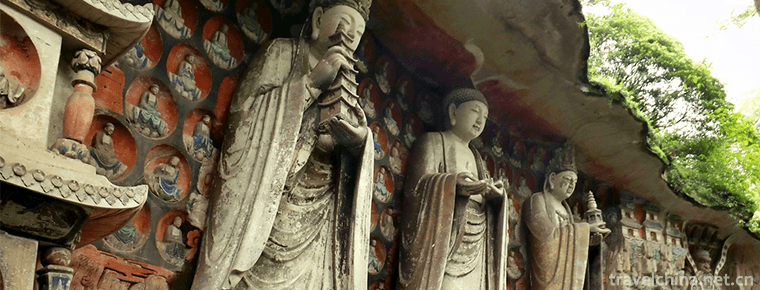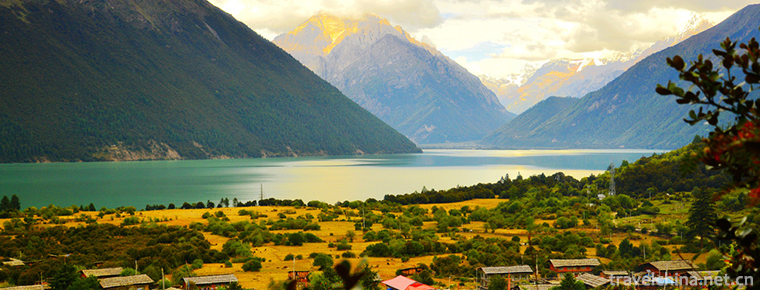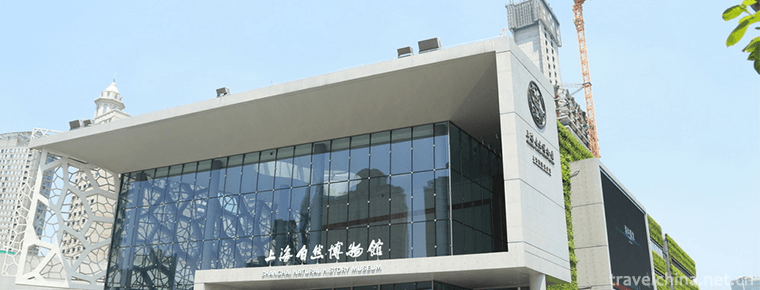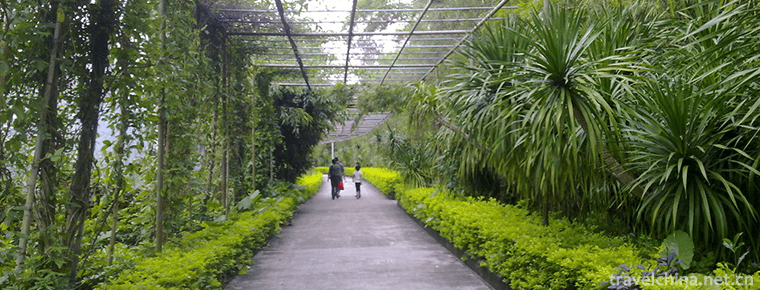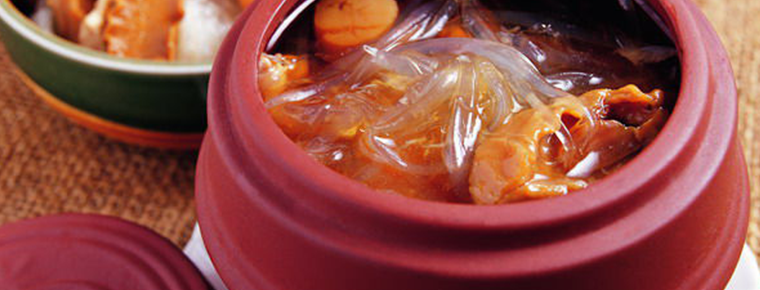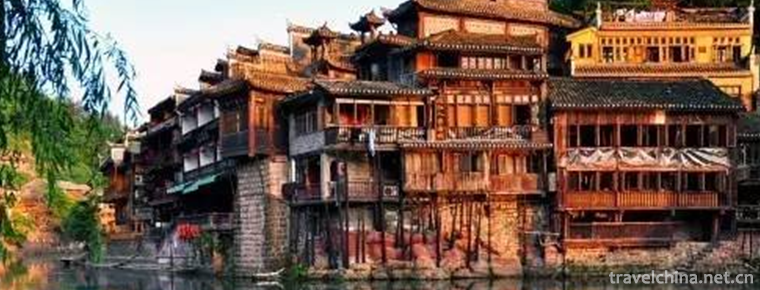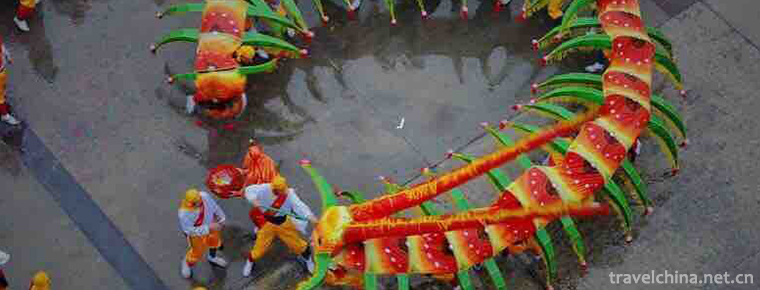Slab headed qu
Slab headed qu
Nanyang Bantou music is a unique traditional string music. Music and the Central Plains drum tunes (major tunes) with a long history complement each other. They are preludes played in solo and ensemble forms before major tunes are sung. The purpose of prelude is to activate the atmosphere, introduce the realm and express the beauty of art in the language of music. Music theme is all-inclusive, with the characteristics of fresh spirituality, pure melodious, long rhyme and appreciation of both elegance and vulgarity. It has the same value as Jiangnan silk and bamboo, Chaozhou music and Shanxi music, and is known as the four major schools of traditional Chinese national instrumental music. His masterpiece Alpine Running Water has a great influence in the whole country.
Bantou Opera is an ancient Chinese tune of Zhongzhou. It is played with Zheng, Pipa and Three Strings. It is a classic in the Chinese national music heritage. It is also called "Bantou Music" or "Bantou Music of Henan Opera" because it is a prelude to the formal performance of Henan Opera in the form of solo and ensemble.
On May 20, 2006, Nanyang, Henan Province, declared Bantouqu, which was approved by the State Council, was included in the first batch of national intangible cultural heritage lists.
Brief introduction
One of the traditional Chinese instrumental stringed music. It is an integral part of Henan Major Tune (a kind of rap and singing art combined with music cards). It is popular in Nanyang, Kaifeng, Xinyang, Luoyang and other vast areas of Henan Province. Bantou Tune is an ancient tune of Zhongzhou. It is played with Zheng, Pipa and Three Strings. It is a classic in the music heritage of the Chinese nation. It is also called "Bantou Music" or "Bantou Music of Henan Opera" because it is a prelude to the formal performance of Henan Opera in the form of solo and ensemble.
Nanyang is located in Nanyang Basin of Henan Province. It has profound cultural accumulation, especially in the aspects of folk art, music, dance and so on. It is a well-known town of folk art in China and has the reputation of "Shushan Quhai".
The major tunes are composed of "Bantou Tune", "Brand Divergence" and "Miscellaneous Brands" (also known as Xiaoling). Bantou Opera is an instrumental music that is played before the opening of a trademark divertimento or miscellaneous music. It is similar to the opening gongs and drums of traditional opera. It is mainly used to call the audience or stabilize their emotions. Its style is simple, unrestrained and elegant. It has been processed and improved by literati and artists of different generations. It has high artistic attainments and has gradually developed into an independent music with a certain artistic level.
Henan Bantou Opera is often played with three strings, pipa, zither and other plucked instruments, accompanied by palmo, yueqin, soft bow, Beijing Hu, Erhu (Erweng), Dongxiao and octagonal drum. When the performers are small, they only play with three strings and palette; in addition, there is a solo form, commonly used three strings, Guzheng and so on.
The structure of Henan Bantou Qu is rigorous. It varies the melody of the widely circulated "Old Eight Boards" (Henan Bantou Song is called "Single Eight Boards") as the basic material, and becomes a music that can express a variety of emotions, such as "Little Magpie" and "Vineyard". Its speed is divided into fast board, medium board and slow board, mostly 68 boards. Another form of structure is based on the singing of the brand song and imitates the structure of "Eight Boards". Sometimes, they also play drum heads, such as "Complaints in the Boudoir" and "Weeping Zhou Yu".
There are three titling methods for Henan Bantou Qu:
(1) Named after a plate, such as "Double Eight Boards" and "Flowers and Flowers";
(2) Named after historical stories, such as Zi Wailing Road and Yingying Calling Red;
(3) Named after the images described in the music, such as "Birds to Phoenix" and "Lions Rolling Hydrangeal Balls".
There are about 100 pieces of Bantou Opera in Henan Province.
Bantouqu is widely distributed in Nanyang, Biyang, Dengxian, Xuchang and Kaifeng, but its communication center is in Nanyang. Most of the music originated from the ancient instrumental music "Eight Boards" and its various variants. At the same time, it widely absorbed Henan tunes, singing tunes and folk tunes.
song
The structure of Henan Bantou Qu is rigorous. It varies the melody of the widely circulated "Old Eight Boards" (Henan Bantou Song is called "Single Eight Boards") as the basic material, and becomes a music that can express a variety of emotions, such as "Little Magpie" and "Vineyard". Its speed is divided into fast board, medium board and slow board, mostly 68 boards. Another form of structure is based on the singing of the brand song and imitates the structure of "Eight Boards". Sometimes, they also play drum heads, such as "Complaints in the Boudoir" and "Weeping Zhou Yu".
There are three naming methods for the title of Henan Bantou Opera: first, it is named in the form of plate, such as "Double Eight Boards" and "Flowering Water"; second, it is named in historical stories, such as "Wailing Road", "Yingying Calls Red"; third, it is named in the image described in the music, such as "Birds and Phoenixes" and "Lions Rolling Hydrangea Ball".
There are about 100 pieces of Bantou Opera in Henan Province. Its representative repertoires are Danba Ban, Gaoshan Running Water, Dayan, Homesickness, Sichun, Great Help, Yongjun, Sighing Yan Hui, Zhengxi, Falling from the Courtyard, Eight Views, Hefan, Xiaofei Dance, Winter Magpie contending for plum and so on.
Structure development
Many of the characteristics of "Bantou" and its structure are variants of the instrumental music "Babang", which is widely spread among Chinese folk music, just like most traditional folk music in China. As far as its musical structure is concerned, it basically belongs to the category of "octagonal style". Of course, many of the "Bantou Music" are based on local traditional folk music, folk minor changes, and also derived from the development of major music materials, but they still follow the structure of the octahedral music. In terms of musical techniques, Babanti music belongs to the "plate variation" of a single song which is changed from the same basic musical theme. That is to say, they are based on the tone of the "Babang" as the theme (typical method), or choose other tones as the theme, but they are all referred to as "mother song" by referring to the traditional image, and they are pronounced through the use of a variety of techniques mainly based on "plate variation". Many music variants with different artistic characteristics and different contents and interests have been developed. Among them, the role of local characteristics and individual artistic accomplishment and style of composers (often performers) can not be ignored, because it is based on this that different local music types and different music schools have been formed.
The prototype of Babang is composed of eight melodies, each of which is a unit. The four units constitute a typical relationship of "starting, inheriting and transferring". Traditionally, each sentence is a "board". Therefore, the song is named "Babang". This piece of music is palace-style music. The whole piece has 68 beats. It is commonly called "68-board music" because each beat beats a wrench. Its "rise" and "inheritance" echo back and forth in the relation of tone and structure, and its "turn" feature is that it has expanded in the phrase, and falls are different from "rise" and "inheritance" in the relation of tone and structure. Its "turn" feature is that the upstream music of the phrase expands, and the falls are different from "rise" and "inheritance"; "close" and "turn" in a sentence, and the structure is also integrated and stable. Fixed, the harvesting function is obvious. For example, "Eight Boards" in "Strings for Textual Research" and "Single Eight Boards" in Henan, two tunes are eight sentences and thirty-four bars. The "Sixty Eight Boards" music with one board per beat is palace mode, and the characteristics of "Eight Boards" are very obvious. The "Eight Boards" in the "string for reference" is the prototype "mother song" of the "Eight Boards" music. All the "Eight Boards" music, including the "Bantou" music, mostly derives from it.
Each sentence of "Qi" and "Cheng" in "Baban" consists of the same four sections and eight boards. The four phrases fall on "2", "5", "2" and "5". Moreover, the two melodies of "Qi" are basically the same, but there are differences at the end of the sentence. This melodic technique is traditionally called "changing the end", and such "Qi" is also called "Baban Tou". The first sentence of "Zhuan" extends the four "boards". Both sentences fall on the "1" of the Gong Yin, while the "He" emphasizes the fall of "Zhuan", and both sentences fall on the "1" of the Gong Yin. The second sentence of "Zhuan" is repeated in the closing sentence (only slightly different in the first beat) and becomes "Changtou". The ending sentence of the whole song is also called "the end of the eight boards". The characteristics of each part of Baban analyzed above are the basic procedures to be mastered and followed in compiling innovative "Baban Style" music. Single Eight Board is a main style of Eight Board which is popular in Henan Province. Because of the influence of Henan local style and the embellishment of Guzheng playing technique, it has a little difference with the melody of Eight Board, especially the falling tone of the first sentence has become the palace sound "1". But on the whole, it is still a typical "octagonal" music, and in fact it can also be called the "mother song" of "Henan Bantou Music". There are many variants of Baban in the "Baban Style" music of different places, and some of them are quite large. This is due to the differences in structure, speed, rhythm, rhythm, melody and mode caused by different regions or different expressive contents. However, no matter how great the changes are, they have more or less in common in tone consonance, syntax and structure, that is, they have the structural characteristics of "octahedral". In compiling the innovative "Eight-board Style", artists make full use of the plasticity of the prototype "Mother Song" - - "Eight-board" to carve and refine, and flexibly use its program in the limited sixty boards to promote the old and bring forth the new, so as to express their different feelings and interests, so that the limited material of "Eight-board" can develop indefinitely, and eventually create a complicated repertoire. Various and colorful "Henan Bantou Music".
Track development
Henan Bantou Opera originated in Song Dynasty. It is known as the "fundamental" of traditional Chinese national music. It is one of the four major types of music in our country, together with Fujian Nanyin, Jiangnan Sizhu and Guangdong music. It is a rare kind of music in Henan and even in the whole country.
According to records, during Chongzhen's reign in the Ming Dynasty, Bantou Qu appeared with Henan Quzi in Zhushijing. In the early Qing Dynasty, it gradually prevailed in the above places. Its orchestra is not equipped with gongs, drums and Sheng pipes, but mainly with plucked instruments, plus Huqin, Sihu and other stringed instruments, which has become a rare string-rope combination in traditional Chinese folk bands.
In 2013, some of the Bantou Opera was collated and published by the Institute of Ethnic Music of the Central Conservatory of Music.
artistic characteristics
Classified performance
Bantou music is divided into two kinds: fast board and slow board, slow board is one-sided and one-sided. Most of the melodies are plaintive and low; the Allegro is dull and melodious. Because of the wide range, bright timbre and beautiful rhythm of Guzheng and Sanxian instruments, they are suitable for expressing the delicate and euphemistic mood of Bantou tunes. Most of them sound beautiful and have a bright rhythm, which makes people enter the artistic realm of "this tune should only exist in the sky, but there are few times in the world". Homesickness is sad and tearful; Goose Strikes is happy and easy to listen to; Alpine Flowing Water is magnificent and full of thoughts; Goose Falling on the Beach is deep and memorable.
Forms of expression
Among the current Bantou tunes handed down, most of them are suitable for guzheng, tri-stringed and pipa playing alone, and some are suitable for a variety of musical instruments. According to their performance characteristics and the role they play on different occasions, there are four kinds of views in the literary and artistic circles about the origin of Bantou music: one is to gather popularity, attract audiences, and pave the way for the formal singing of major tunes; the other is to ease the performing atmosphere. During the transition of major tunes in different repertoires, the orchestra plays the headpiece so as to avoid the phenomenon of cold field when the performers rest and replace. The third is the tune setting. The purpose is to make the musicians of different instruments understand each other tacitly. Fourth, to show talent, to make friends by music, to make beautiful people by music.
Outstanding repertoire
The form of Bantou music is basically 68 boards, that is, 16 boards of Pantou, 6 8 boards of rising momentum, 4 boards of shaking tail, commonly known as "Lao Babang", which is one of the most commonly used structural forms of national instrumental music. The content of Bantouqu is based on historical legends and stories, such as Zheng Zheng, Alpine Running Water, Suwu Homesickness, etc. The content of Bantouqu describes women's depression and grief in feudal society, such as Hope for a husband, Sichun, Sad Autumn, etc. . The content of Bantouqu is expressed by scenes, such as Manyuan Spring, Spring Rain and Willows, Winter Magpie and Winter. Wait a minute. This part has the largest number of Bantou songs.
Most of its music originated from the ancient instrumental music "Eight Boards" and its various variants. At the same time, it widely absorbed Henan tunes, singing tunes and folk minors. The representative repertoires are "The Great Harmony of the World", "Alpine Running Water", "New Opening Plate", "Chen Xingyuan and Fan", "Beating Goose", "Appreciating Autumn", "Boudoir Complaint", "Upstairs", "Downstairs" and so on. Most of the music forms are sixty-eight slabs, which are rigorous and flexible in structure.
Representative repertoire
There are Shanba Ban, Gaoshan Running Water, Dayan, Homesickness, Sichun, Great Help, Yongjun, Zhengxi, Falling in the Courtyard, Eight Sceneries, Hefan, Xiaofei Dance and Winter Magpie contending for plum.
Inheritance significance
After 1949, Bantou music was revived and received extensive attention. In 1953, Mr. Cao Dongfu, a well-known zither performer and heir of Bantou Opera, participated in the first national folk music and dance concert on behalf of Henan Province. The Zheng songs of Gaoshan Running Water and Suwu Shepherd, handed down by Mr. Cao Dongfu, a famous generation of artists, spread all over Shenzhou and abroad. In the syllabus of Chinese Musical Instrument Performance Course (undergraduate course), Boudoir Complaint, Alpine Flowing Water, Lantern Festival, Upstairs and Downstairs are all music scores of Bantou. Since then, Cao Dongfu and his descendants have devoted themselves to the recording and performance of Bantou Opera, making great contributions to the inheritance and protection of this rare music variety. With the death of most of its descendants, Tantouqu is facing a crisis of decline and loss.
On May 20, 2006, Nanyang, Henan Province, declared Bantouqu, which was approved by the State Council, was included in the first batch of national intangible cultural heritage lists.
Henan Bantou Music
Bantou music is a kind of traditional folk music, which belongs to the string music of Chinese traditional instrumental music. It's a tune in Henan Major (a theory of suffix of tunes and cards)
As a part of singing art, it is popular in Nanyang, Kaifeng, Xinyang and Luoyang of Henan Province. The major tunes include "Bantou Tune", "Brand Divergence" and "Miscellaneous Brands" (also known as Xiaoling). Henan Bantou Opera is often played with three strings, pipa, zither and other plucked instruments, accompanied by palmo, yueqin, soft bow, Beijing Hu, Erhu (Erweng), Dongxiao and octagonal drum. When the performers are small, they only play with three strings and palette; in addition, there is a solo form, commonly used three strings, Guzheng and so on.
The structure of Henan Bantou Qu is rigorous. It varies the melody of the widely circulated "Old Eight Boards" (Henan Bantou Song is called "Single Eight Boards") as the basic material, and becomes a music that can express a variety of emotions, such as "Little Magpie" and "Vineyard". Its speed is divided into fast board, medium board and slow board, mostly 68 boards. Another form of structure is based on the singing of the brand song and imitates the structure of "Eight Boards". Sometimes, they also play drum heads, such as "Complaints in the Boudoir" and "Weeping Zhou Yu".
Bantou Opera is an instrumental music that is played before the opening of a trademark divertimento or miscellaneous music. It is similar to the opening gongs and drums of traditional opera. It is mainly used to call the audience or stabilize their emotions. Its style is simple, unrestrained and elegant. It has experienced the improvement of literati and artists. It has a high artistic attainment and gradually developed into an independent music with a certain artistic level.



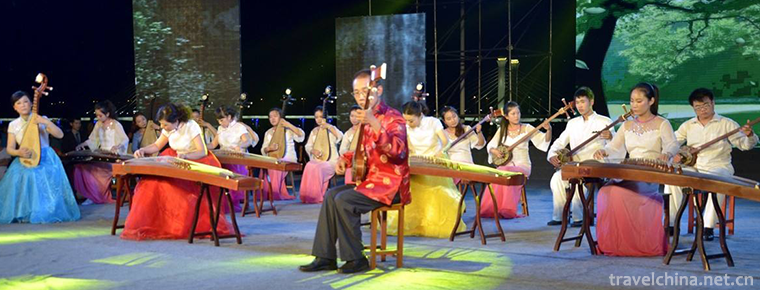
-
The Dazu Rock Carvings
Dazu Stone Scenic Area is a religious cliff sculpture in the late Tang and early Song Dynasty, with Buddhist themes as the main theme, especially the Beishan Cliff sculpture and Baoding Mountain Cliff.
Views: 203 Time 2018-12-12 -
Linzhi Basongcuo Scenic Area
Basongtao, also known as Caogao Lake, means "green water" in Tibetan. It is about 18 kilometers long. Its surface area is about 27 square kilometers. .
Views: 157 Time 2018-12-12 -
Shanghai Museum of Natural History
The Shanghai Museum of Nature (Shanghai Science and Technology Museum Natural Branch) is one of the largest natural museums in China. Located in the center of Shanghai, Address: 260 Yan'an East Road, .
Views: 356 Time 2018-12-15 -
maoming forest park
Maoming Forest Park is located in the western suburb of Maoming City, Guangdong Province. It is only 12 kilometers away from the urban area and covers an area of more than 4500 mu.
Views: 184 Time 2019-02-07 -
Grass grass drums and drums
Grass gongs and drums, also known as grass chants, are commonly known as "hilarious songs". It is a unique form of folk song art. It is a kind of Tujia folk song that the .
Views: 130 Time 2019-05-02 -
The Craft of Juchunyuan Buddha Jumping Wall
"Buddha Jumping Wall" is the first famous dish in Fujian cuisine. It is well-known at home and abroad for its exquisite materials, unique preparation method and strong flavor.
Views: 116 Time 2019-05-08 -
Construction Techniques of Tujia Diaojiao Building
Tujia hanging-feet building construction skills, Hubei Xianfeng County, Hunan Yongshun County, Chongqing Shizhu Tujia Autonomous County, local traditional skills, one of the national intangible cultur.
Views: 144 Time 2019-06-23 -
Wang Guo Festival
Wangguo Festival is a festival for Tibetan farmers to celebrate a bumper harvest. It is popular in Lhasa, Shigaze, Shannan and other places in Tibet Autonomous Region. The time is between July and Aug.
Views: 130 Time 2019-06-26 -
Centipede dance
Centipede dance, Guangdong traditional folk dance. Originated from Tongzhi in Qing Dynasty to Guangxu, it was initiated by Chen Chengjin, a native of Ximen, and Shi Wenyong, a good friend. It is a squ.
Views: 163 Time 2019-06-29 -
Tianshi cave
Tianshi cave, also known as Chang Taoist temple, is the most important Taoist temple in Qingcheng Mountain. In 1983, it was designated as the national key Taoist temple by the State Council. In addition, there are four palaces in Qingcheng Mountain: Jianfu palace, Yuanming palace, Yuqing palace and Shangqing palace..
Views: 321 Time 2020-11-08 -
Guangyuan tertiary industry
In 2018, the total social fixed asset investment in Guangyuan was 67.221 billion yuan, an increase of 14.1% in the same caliber. Among them, investment in fixed assets was 64.721 billion yuan, an increase of 16.4%..
Views: 316 Time 2020-12-15 -
Suining history and culture
As a place name, "Suining" began in the Eastern Jin Dynasty. The Eastern Jin Dynasty coexisted with the Sixteen States, while Suining belonged to the Chenghan state. At that time, the rulers of various countries had been fighting with each other for years.
Views: 203 Time 2020-12-16
